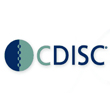WASHINGTON: A triple therapy treatment consisting of two experimental drugs and radiation therapy may help fight lung cancers that are resistant to current treatments, a new study has claimed.
Although the most common type of lung cancer – non-small cell lung cancer (NSCLC) – has recently seen major treatment advances in some genetic subtypes, other subtypes continue to evade effective treatment, researchers said.
Roughly 85 per cent of all lung cancers belong to the NSCLC type. Although there have been some advances in treating this disease, only two per cent of survivors live five years beyond treatment.
Drugs have been developed to target the ALK- and EGFR-mutated subtypes, and are to some degree effective, however, one genetic subset, NSCLCs with mutations in the gene KRAS have been resistant to conventional and targeted therapies.
The new study in mice has shown that cancers with KRAS-related gene mutations might benefit from a triple therapy with two experimental drugs plus radiation therapy.
“Currently there is a clinical trial underway to evaluate the combination of two cancer drugs, trametinib and palbociclib, made by two pharma companies for patients with solid tumours and melanoma,” said Bo Lu, Professor of Radiation Oncology at Thomas Jefferson University in US.
“Although further research in human subjects is needed to confirm the finding, our study suggests that we may be able to identify non-small cell lung cancer patients who are likely to benefit most from this combination of therapies,” ,Mr Lu said.
The researchers studied the KRAS-mutant subset in NSCLC cells and found that there was variation within this subset; some were more resistant to a drug that targeted the KRAS gene pathway than others.
An additional mutation in a protein called p16 appeared to be responsible for this difference.
After scanning a database of lung-cancer patient genotypes, the researchers saw that patients with the p16 mutation had a lower overall survival rate than those without the mutation.
In order to help make these resistant KRAS mutants more susceptible to therapy, the researchers combined the KRAS-targeting drug with another drug that would undo the effects of the p16 mutation.
They showed that the combination of the two drugs make these resistant cancer cells susceptible to radiation treatment.
The research could help identify the patients who could potentially benefit from a triple-therapy treatment.
The study was published in the journal Clinical Cancer Research.









